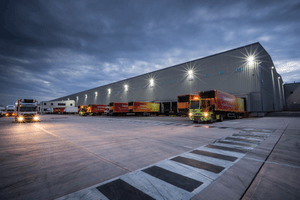This article is from the Australian Property Journal archive
DWELLING values in Australia’s regional markets are outpacing their capital city counterparts, with 1.1% growth over the three months to October.
According to the latest CoreLogic Regional Market Update, while the pace of growth is down from earlier in 2024, the regions are still experiencing greater growth than the capitals, which saw a 0.8% bump over the same three-month period.
Mining regions in Queensland and Western Australia’s regional markets are leading the country, with Mackay, QLD up 8.3%, Geraldton, WA up 8.2% and Townsville, QLD up 6.6%.
“Regions like Mackay, Geraldton, and Townsville are seeing exceptional growth, driven by affordability advantages compared to our major cities, as well as lifestyle appeal,” said Kaytlin Ezzy, report author and economist at CoreLogic Australia.
“This will have contributed to the strong demand but even with the impressive growth, for those with the capacity to service a mortgage, they still remain attainable with medians less than $600,000.”
WA’s Geraldton also banked the greatest annual value increase, up a whopping 28.7% over the year to October, reflecting a boost to the median value of over $100,000.
Gladstone and Townsville also saw significant annual growth over the period, up 27.2% and 26.9% respectively.
Victorian and NSW non-capital city Significant Urban Areas (SUAs) brought in less plentiful results with seven of eight SUAs in Victoria and 10 out of 21 NSW SUAs recording a decline in value over the three-month period.
Batemans Bay, NSW saw the greatest fall, dropping 2.7% over the quarter, closely followed by Warrnambool, VIC’s 2.6% decline.
This was also reflected in annual results, with 10 markets across NSW and Victoria seeing a fall in value over the year to October.
Annually, Ballarat, VIC recorded the greatest decline at 6.3%, while both the St Georges Basin – Sanctuary Point region, NSW and the Warragul – Drouin region in Victoria down -3.9%.
The decline in NSW and Victorian regional lifestyle areas, comes after a massive surge in growth over the peak years of COVID.
“While these markets thrived during the early stages of COVID, reduced affordability and a range of headwinds have since softened conditions,” added Ezzy.
“There’s certainly been a slowdown in demand for these areas and more stock on the market and that’s in addition to higher interest rates, cost of living pressures, and limited borrowing capacity.”
Sales were strongest in Geraldton and Gladstone, with a 44.2% and 34.3% increase to annual sales volume respectively.
Regional WA and QLD markets led in multiple metrics, with minimal vendor discounting and low days on the market, reflecting lifestyle appeal, affordability and conditions that are attractive to investors.
“Despite challenges such as high interest rates, affordability pressures, and economic uncertainty in other parts of the country, momentum in these leading regional markets remains strong,” said Ezzy.
In the regional rental market, the regions are again growing at a faster pace than the capitals, with a 0.5% boost over the quarter.
Albany, WA was the strongest regional rental market after a 3.0% boost over the quarter, with Mount Gambier, SA up 2.7%.
While over the year, Geraldton, WA was again featured after a 14.6% or $66 per week increase to rents.
Regional WA also saw the greatest gross rental yields, with the Kalgoorlie-Boulder seeing a 8.8% yield for the quarter, after falling 70 basis points from its 9.5% peak in March.
“Rental markets where there’s been strong quarterly increases are experiencing a combination of strong tenant demand and constrained supply,” said Ezzy.





